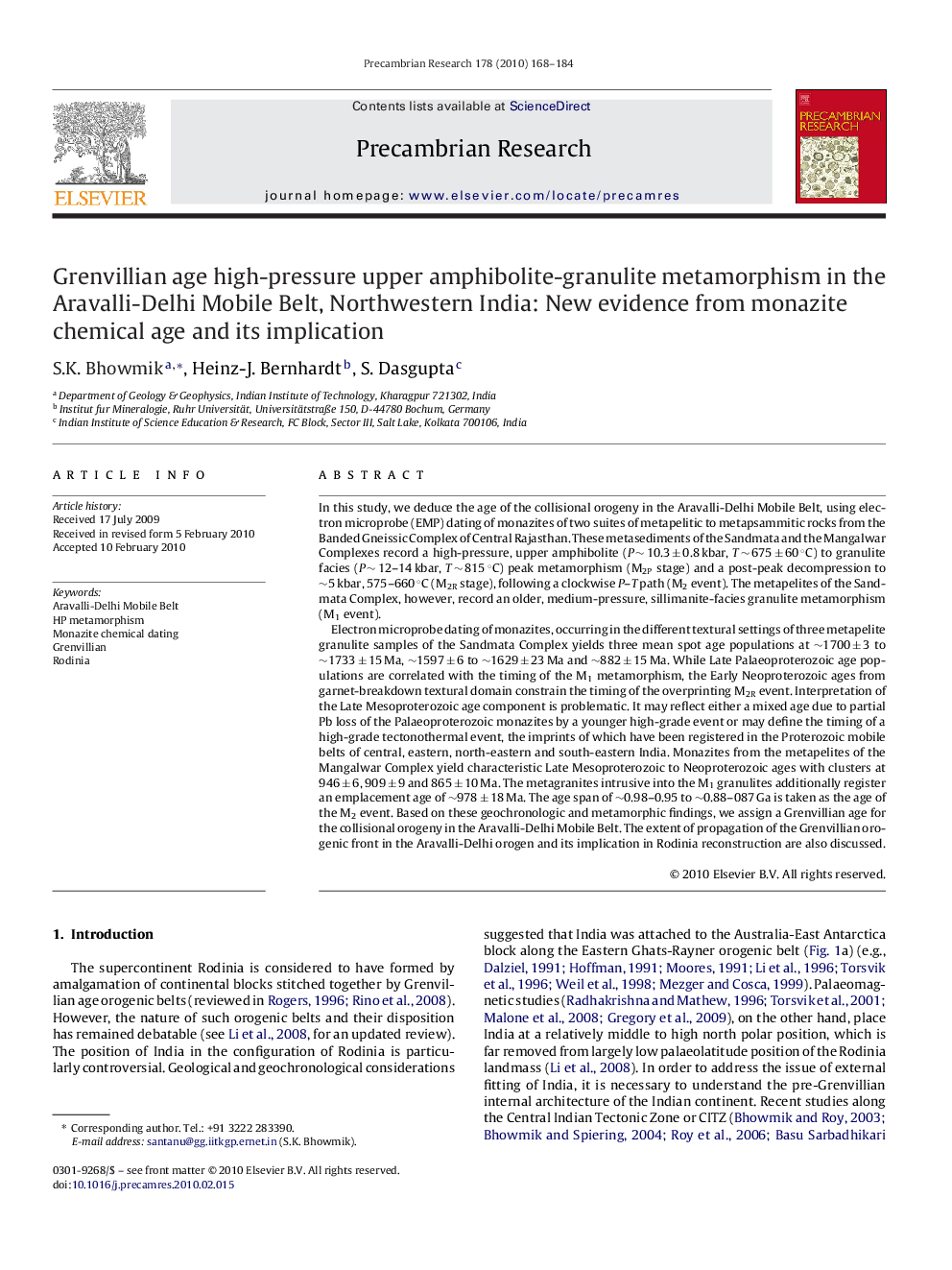| Article ID | Journal | Published Year | Pages | File Type |
|---|---|---|---|---|
| 4723872 | Precambrian Research | 2010 | 17 Pages |
In this study, we deduce the age of the collisional orogeny in the Aravalli-Delhi Mobile Belt, using electron microprobe (EMP) dating of monazites of two suites of metapelitic to metapsammitic rocks from the Banded Gneissic Complex of Central Rajasthan. These metasediments of the Sandmata and the Mangalwar Complexes record a high-pressure, upper amphibolite (P ∼ 10.3 ± 0.8 kbar, T ∼ 675 ± 60 °C) to granulite facies (P ∼ 12–14 kbar, T ∼ 815 °C) peak metamorphism (M2P stage) and a post-peak decompression to ∼5 kbar, 575–660 °C (M2R stage), following a clockwise P–T path (M2 event). The metapelites of the Sandmata Complex, however, record an older, medium-pressure, sillimanite-facies granulite metamorphism (M1 event).Electron microprobe dating of monazites, occurring in the different textural settings of three metapelite granulite samples of the Sandmata Complex yields three mean spot age populations at ∼1700 ± 3 to ∼1733 ± 15 Ma, ∼1597 ± 6 to ∼1629 ± 23 Ma and ∼882 ± 15 Ma. While Late Palaeoproterozoic age populations are correlated with the timing of the M1 metamorphism, the Early Neoproterozoic ages from garnet-breakdown textural domain constrain the timing of the overprinting M2R event. Interpretation of the Late Mesoproterozoic age component is problematic. It may reflect either a mixed age due to partial Pb loss of the Palaeoproterozoic monazites by a younger high-grade event or may define the timing of a high-grade tectonothermal event, the imprints of which have been registered in the Proterozoic mobile belts of central, eastern, north-eastern and south-eastern India. Monazites from the metapelites of the Mangalwar Complex yield characteristic Late Mesoproterozoic to Neoproterozoic ages with clusters at 946 ± 6, 909 ± 9 and 865 ± 10 Ma. The metagranites intrusive into the M1 granulites additionally register an emplacement age of ∼978 ± 18 Ma. The age span of ∼0.98–0.95 to ∼0.88–087 Ga is taken as the age of the M2 event. Based on these geochronologic and metamorphic findings, we assign a Grenvillian age for the collisional orogeny in the Aravalli-Delhi Mobile Belt. The extent of propagation of the Grenvillian orogenic front in the Aravalli-Delhi orogen and its implication in Rodinia reconstruction are also discussed.
